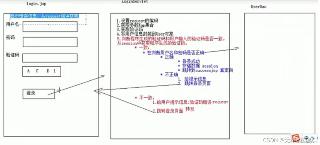java中创建、写入文件的5种方式
在java中有很多的方法可以创建文件写文件,你是否真的认真的总结过?下面笔者就帮大家总结一下java中创建文件的五种方法。
Files.newBufferedWriter(Java 8) Files.write(Java 7 推荐) PrintWriter File.createNewFile FileOutputStream.write(byte[] b) 管道流实际上不只这5种,通过管道流的排列组合,其实有更多种,但是笔者总结的这五种可以说是最常用及最佳实践,
前提小知识
以前我在写技术文章涉及到“流关闭”、“连接关闭”的时候,经常有人留言:“还写技术文章,写个流都不知道close()”,这种留言我遇到过无数回!在本文中大量的使用到了try-with-resources语法,这个语法真的是很久的了,但是的确还有小伙伴不知道(知道的小伙伴就略过吧)。我还是说一下,下文中的管道流不是我没close,是自动关闭close的。
try(管道流、连接等实现了Closeable接口的类){ //这里使用类对象操作}//用try()包含起来,就不用在finally里面自己手动的去 Object.close()了,会自动的关闭
1. Java 8 Files.newBufferedWriter
java8 提供的newBufferedWriter可以创建文件,并向文件内写入数据。可以通过追加写模式,向文件内追加内容。
@Testvoid testCreateFile1() throws IOException { String fileName = 'D:datatestnewFile.txt'; Path path = Paths.get(fileName); // 使用newBufferedWriter创建文件并写文件 // 这里使用了try-with-resources方法来关闭流,不用手动关闭 try (BufferedWriter writer = Files.newBufferedWriter(path, StandardCharsets.UTF_8)) { writer.write('Hello World -创建文件!!'); } //追加写模式 try (BufferedWriter writer =Files.newBufferedWriter(path, StandardCharsets.UTF_8, StandardOpenOption.APPEND)){ writer.write('Hello World -字母哥!!'); }}
2. Java 7 Files.write
下面的这种方式Files.write,是笔者推荐的方式,语法简单,而且底层是使用Java NIO实现的。同样提供追加写模式向已经存在的文件种追加数据。这种方式是实现文本文件简单读写最方便快捷的方式。
@Testvoid testCreateFile2() throws IOException { String fileName = 'D:datatestnewFile2.txt'; // 从JDK1.7开始提供的方法 // 使用Files.write创建一个文件并写入 Files.write(Paths.get(fileName),'Hello World -创建文件!!'.getBytes(StandardCharsets.UTF_8)); // 追加写模式 Files.write( Paths.get(fileName), 'Hello World -字母哥!!'.getBytes(StandardCharsets.UTF_8), StandardOpenOption.APPEND);}
3. PrintWriter
PrintWriter是一个比较古老的文件创建及写入方式,从JDK1.5就已经存在了,比较有特点的是:PrintWriter的println方法,可以实现一行一行的写文件。
@Testvoid testCreateFile3() throws IOException { String fileName = 'D:datatestnewFile3.txt'; // JSD 1.5开始就已经存在的方法 try (PrintWriter writer = new PrintWriter(fileName, 'UTF-8')) { writer.println('Hello World -创建文件!!'); writer.println('Hello World -字母哥!!'); } // Java 10进行了改进,支持使用StandardCharsets指定字符集 /*try (PrintWriter writer = new PrintWriter(fileName, StandardCharsets.UTF_8)) { writer.println('first line!'); writer.println('second line!'); } */}
4. File.createNewFile()
createNewFile()方法的功能相对就比较纯粹,只是创建文件不做文件写入操作。 返回true表示文件成功,返回 false表示文件已经存在.可以配合FileWriter 来完成文件的写操作。
@Testvoid testCreateFile4() throws IOException { String fileName = 'D:datatestnewFile4.txt'; File file = new File(fileName); // 返回true表示文件成功 // false 表示文件已经存在 if (file.createNewFile()) { System.out.println('创建文件成功!'); } else { System.out.println('文件已经存在不需要重复创建'); } // 使用FileWriter写文件 try (FileWriter writer = new FileWriter(file)) { writer.write('Hello World -创建文件!!'); }}
5.最原始的管道流方法
最原始的方式就是使用管道流嵌套的方法,但是笔者觉得这种方法历久弥新,使用起来非常灵活。你想去加上Buffer缓冲,你就嵌套一个BufferedWriter,你想去向文件中写java对象你就嵌套一个ObjectOutputStream。但归根结底要用到FileOutputStream。
@Testvoid testCreateFile5() throws IOException { String fileName = 'D:datatestnewFile5.txt'; try(FileOutputStream fos = new FileOutputStream(fileName); OutputStreamWriter osw = new OutputStreamWriter(fos); BufferedWriter bw = new BufferedWriter(osw);){ bw.write('Hello World -创建文件!!'); bw.flush(); }}
以上就是java中创建、写入文件的5种方式的详细内容,更多关于Java 创建、写入文件的资料请关注好吧啦网其它相关文章!
相关文章:

 网公网安备
网公网安备